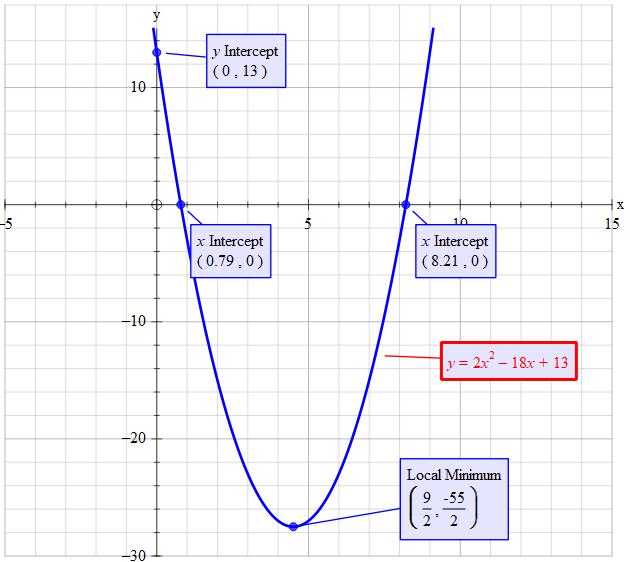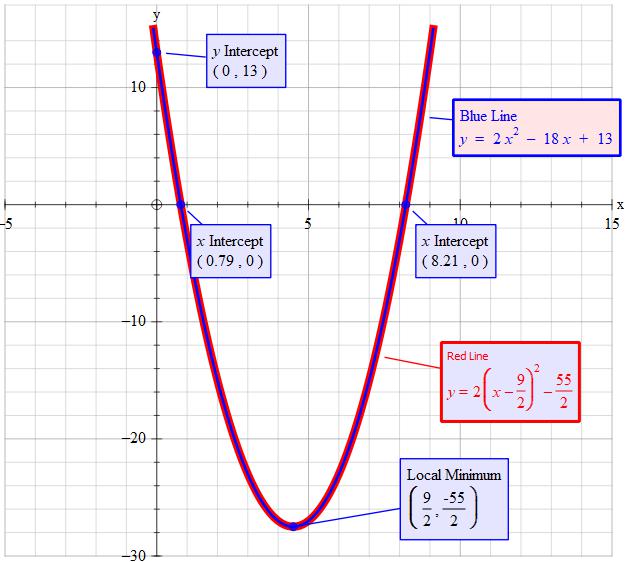How do you find the axis of symmetry, graph and find the maximum or minimum value of the function #y=2x^2 - 18x +13#?
2 Answers
Axis of symmetry:
Vertex (minimum point):
X-intercepts:
Y-intercept:
Refer to the explanation for the process and approximate values for vertex, x-intercepts, and y-intercept.
Explanation:
Given:
where:
To graph a quadratic function, you need to have at least the vertex and x-intercepts. The y-intercept is helpful, also.
Axis of Symmetry: vertical line
Vertex: the maximum or minimum point of the parabola. If
We have the
Simplify.
All terms must have a common denominator of
Vertex:
Approximate vertex:
Substitute
Plug in the known values.
Simplify.
Prime factorize
Simplify.
Roots: values for
Approximate values for
X-intercepts: values of
Approximate
Y-Intercept: value of
Y-intercept:
Plot the vertex and x-intercepts and sketch a parabola through the points. Do not connect the dots.
graph{y=2x^2-18x+13 [-13.95, 18.07, -40.31, -24.29]}
Some notes on Quadratic equation plots
Explanation:
This uses the beginnings of completing the square.
Write as:

~~~~~~~~~~~~~~~~~~~~~~~~~~~~~~~~~~~~~~~~~~~~~~~~~
This takes on the value of
~~~~~~~~~~~~~~~~~~~~~~~~~~~~~~~~~~~~~~~~~~~~~
Note that the vertex is the point of maximum or minimum.
2 of these x-intercepts exist if the graph crosses the x-axis
1 of these exists if the x-axis is tangential to the vertex.
Some people state that there is still two but they are the same as each other.
Sometimes determining these can take a bit or work. Other times not so.
Initial step is to set
If you can spot how to factorise this then that would be the quicker method. For most people this only works if the factors are whole numbers. In this case they are not whole numbers.
There are two options: completing the square or using the other formula.
Part of
The determinant
~~~~~~~~~~~~~~~~~~~~~~~~~~~~~~~~~~~~~~~~~~~~~~~~
The original equation and the completed square are different forms of the same condition. As such the plot of one will be the same as the plot of the other.
Zoom in and you will see that the blue plot follows the same path as the red.



